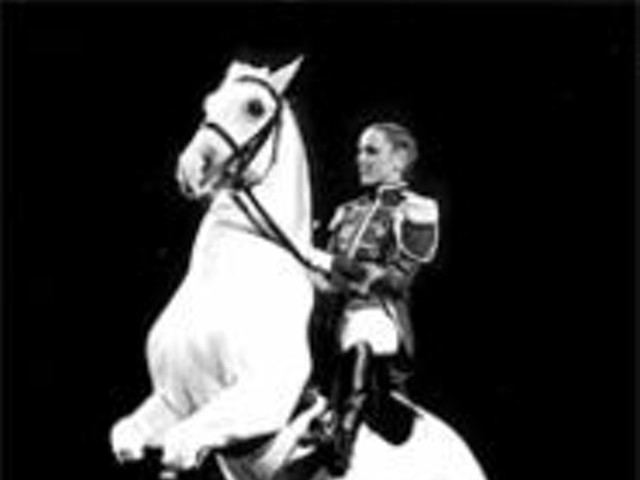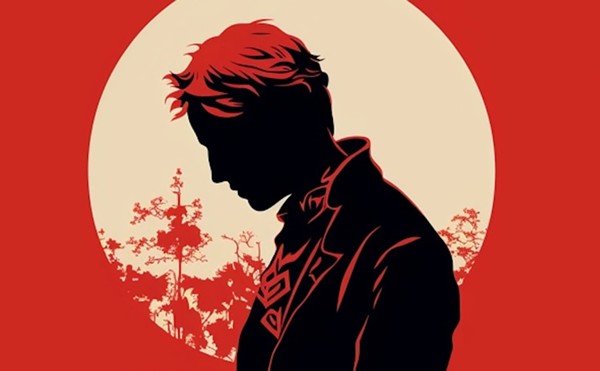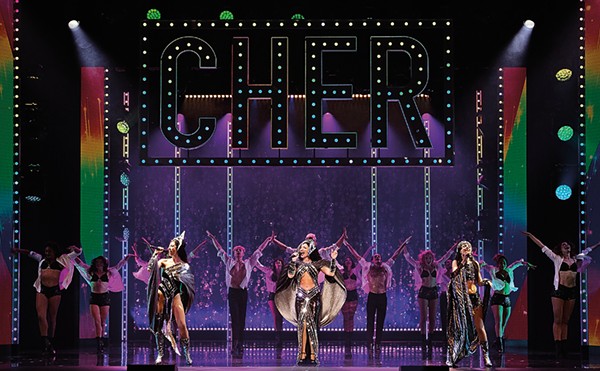The story of an unattractive woman changed into what society views as acceptable is at least as old as Shakespeare (The Taming of the Shrew) and as new as TV shows like Extreme Makeover. What seems compelling in all these tales is the notion of transformation -- the ability to turn one thing (or person) into another. This alchemy is at the heart of the art of theater: Actors transform into characters; paint, wood and fabric become the walls and clothes of another world.
The Saint Louis University Theatre production of My Fair Lady takes this task of transformation seriously, starting with the design elements. Jim Burwinkel's sprawling scenic units take the audience from London streets to Higgins' home to the race track. Hard-working deck crew members twist and turn the scenic pieces like a Rubik's Cube, creating a variety of visually appealing locations. Gregory J. Horton's lavish costume designs create a colorful world of street workers contrasted by the black-and-white elegance of the upper class. The Ascot Gavotte, in which the ensemble plays upper-crust Brits at a horse race, is the highlight of Act One, bringing together Horton's luscious costumes with Gary Wayne Barker's precise direction of movement and diction.
My Fair Lady was first produced in 1956, when shows that ran close to three hours were more common than not (especially if the show was a musical). By today's shorter-is-better standards, the show seems slow in spots. Some of the verses in "I'm an Ordinary Man" seem repetitive, and a few of the dance breaks go on longer than necessary. And while scene changes proceed as quickly as possible given the large amount of pieces that are being moved, the time quickly adds up. Everything about this show is large, from the numbers of locations and costumes to the cast and crew size to the hats.
Playing the large personality of Eliza, Jennifer Theby provides a completely believable transformation from yowling flower- girl to melodious-voiced independent woman. Her moment-by-moment discoveries invite the audience along on her journey, and her lovely singing voice handles both serious and comic numbers with equal flair. As Eliza's father, Paul Balfe uses his energy and comic timing to its greatest advantage in the show-stopping "Get Me to the Church on Time," which also features fine choreography by Millie Garvey and high-kicking dancing by the energetic ensemble.
James Malone grapples with the difficult role of Henry Higgins and creates a humorously pompous character believably set in his ways. Any musical-theater fan knows that as soon as Higgins claims, "I shall never let a woman in my life," that's exactly what's going to happen. The more Eliza becomes the woman he wants her to be, the more she ruffles his bachelor feathers. The mystery of the play is not why Henry enjoys having Eliza in his life, but why Eliza returns to him in the end. Henry's chauvinistic dreams ("Why can't a woman be more like a man?") are meant to be laughed at, but his patronizing treatment of Eliza is so real that it hardly seems funny. She has other options (she could marry the love-struck Freddy, sweetly sung by Ryan McEnaney), but instead chooses Henry. Is this a smart choice for Eliza? Barker's satisfying staging of the ending provides a sense of closure without indicating any precise details of their new relationship, and Lerner and Loewe wisely leave the audience to draw their own conclusions.





